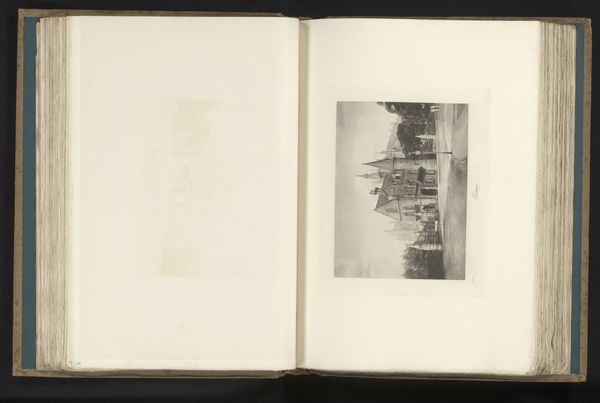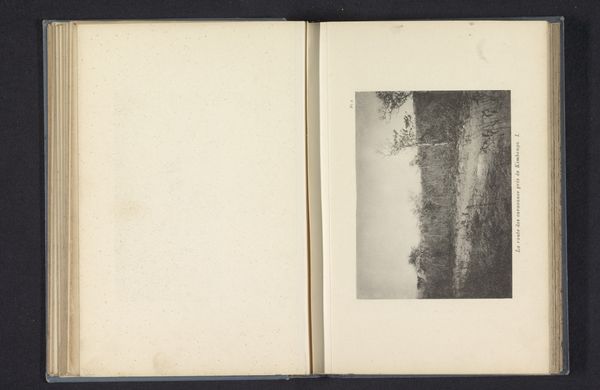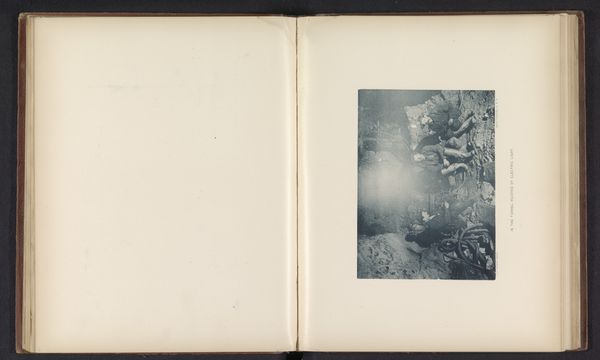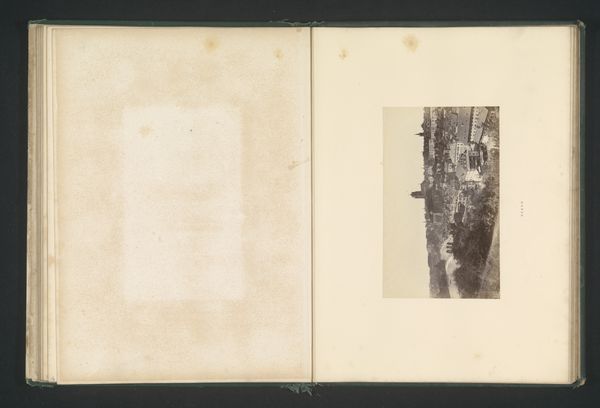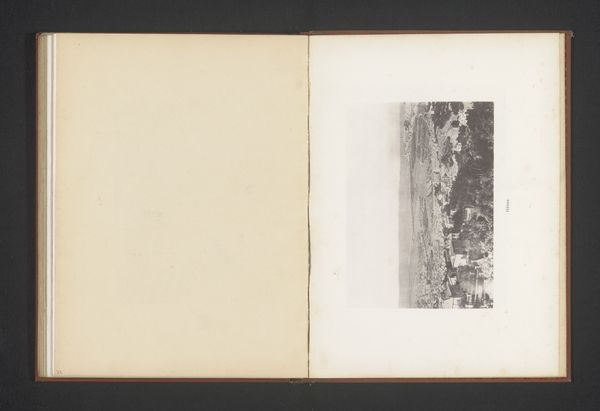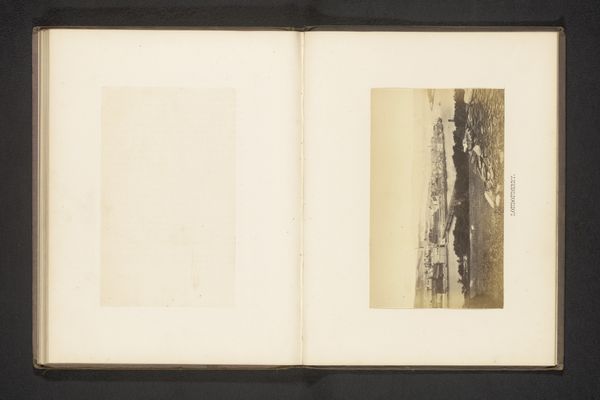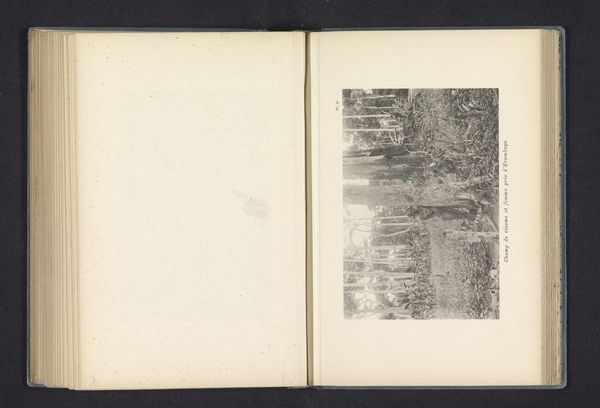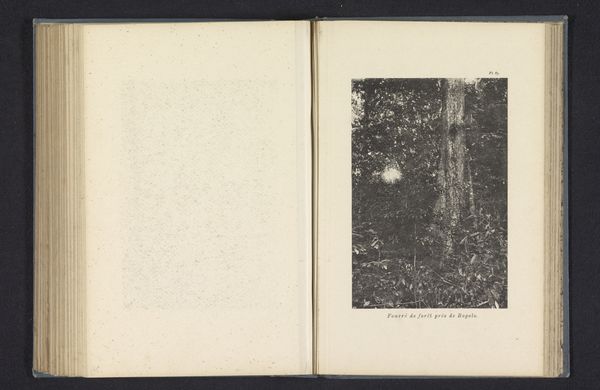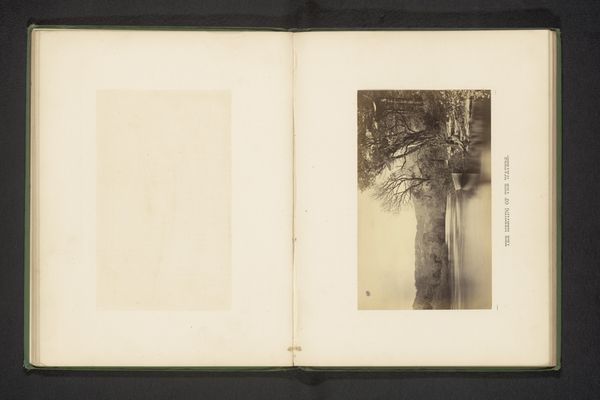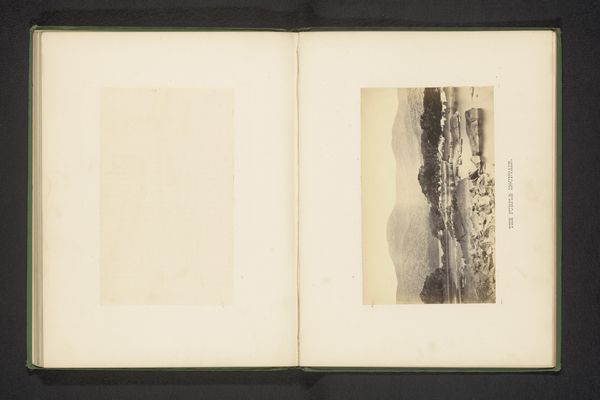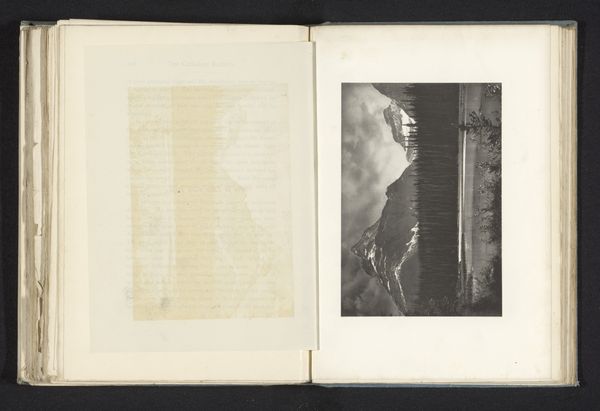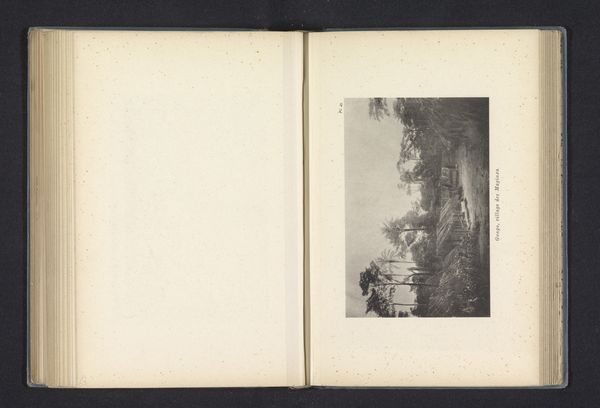
print, etching
#
dutch-golden-age
# print
#
etching
#
landscape
Dimensions: height 84 mm, width 118 mm
Copyright: Rijks Museum: Open Domain
Curator: Here we have an etching titled "Winter in Holland," created before 1883. The print is held here at the Rijksmuseum. Editor: It’s evocative, immediately creating a feeling of stark isolation. The grayscale palette, combined with the skeletal trees, really underscores the harshness of winter. Curator: The Dutch Golden Age is interesting because it shows that landscapes were evolving as important cultural and political representations of identity and power for the Netherlands at the time. It provided new contexts to situate everyday citizens. Editor: Exactly, and who are these citizens depicted in the print? We see several small figures in the background. The artist invites us to contemplate their existence—how gender and class relations manifest themselves within this chilly environment. Are they laborers? Are they simply trying to survive the cold? Curator: Those are great questions. We also have to consider what this art meant in the age in which it was created. Dutch citizens at this time understood these vistas through a variety of established cultural associations. I believe that, by studying the print's reception in its time, we could learn more about how civic pride operated. Editor: I agree. And thinking of the contemporary response to the print makes me consider our contemporary values and anxieties as well. Why does this frozen scene resonate? Are we anxious about climate change, and do scenes of intense nature resonate differently now? Curator: These are really important considerations when attempting to approach art through social awareness and context. Editor: Thanks! It's incredible to think of how just one artistic rendering can embody not only so much artistry, but prompt so much discussion on power, environment, and humanity's place within them.
Comments
No comments
Be the first to comment and join the conversation on the ultimate creative platform.
